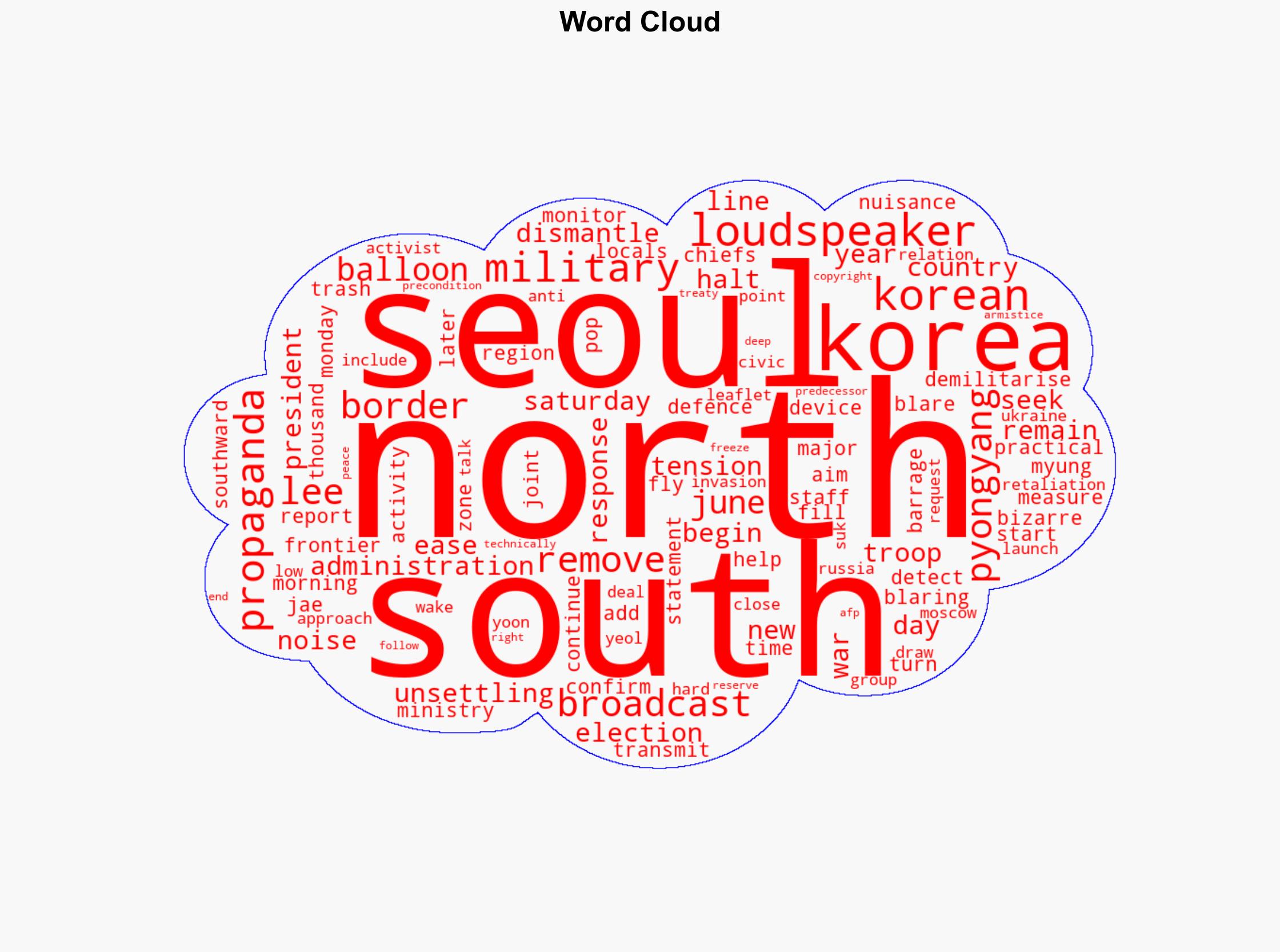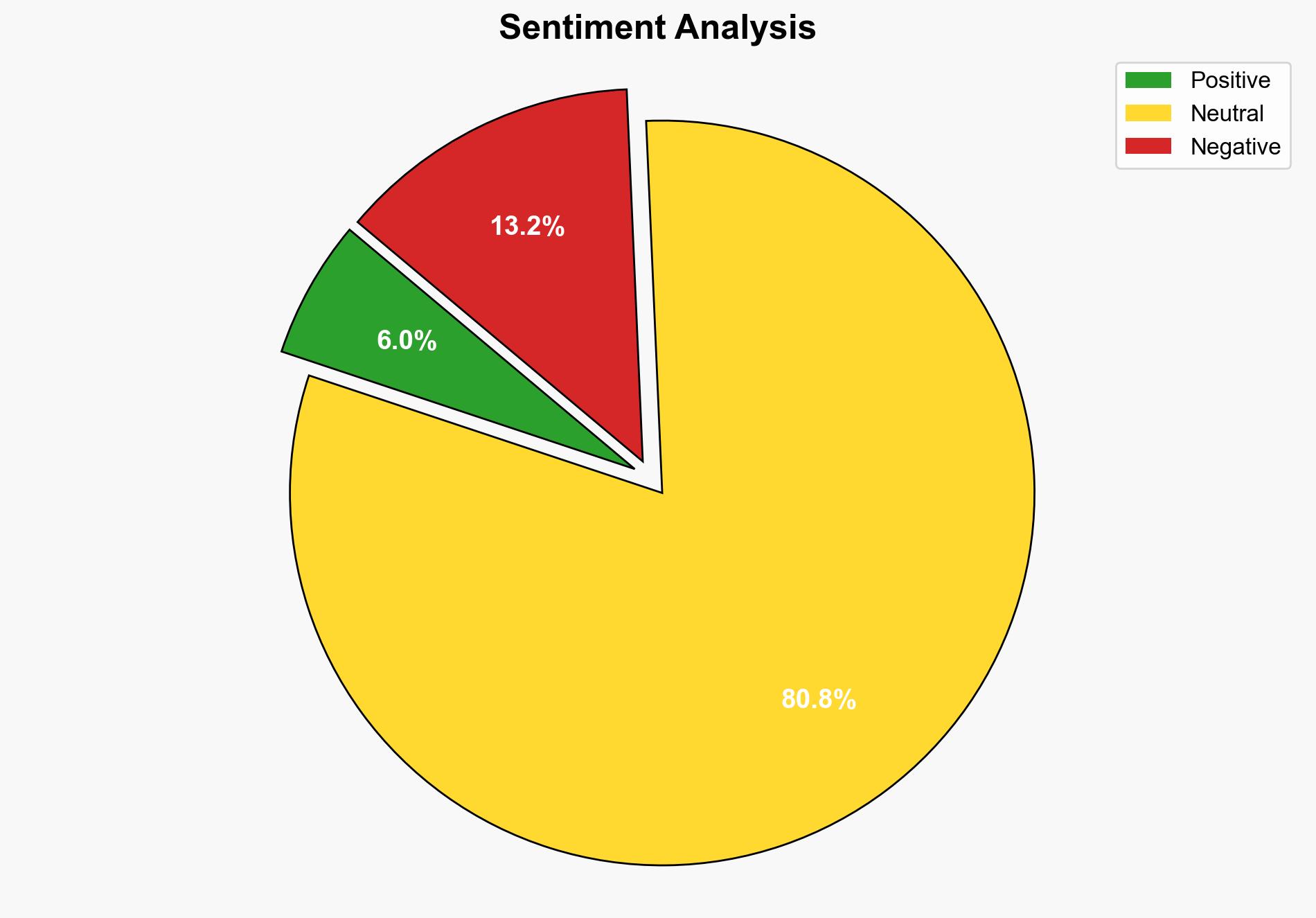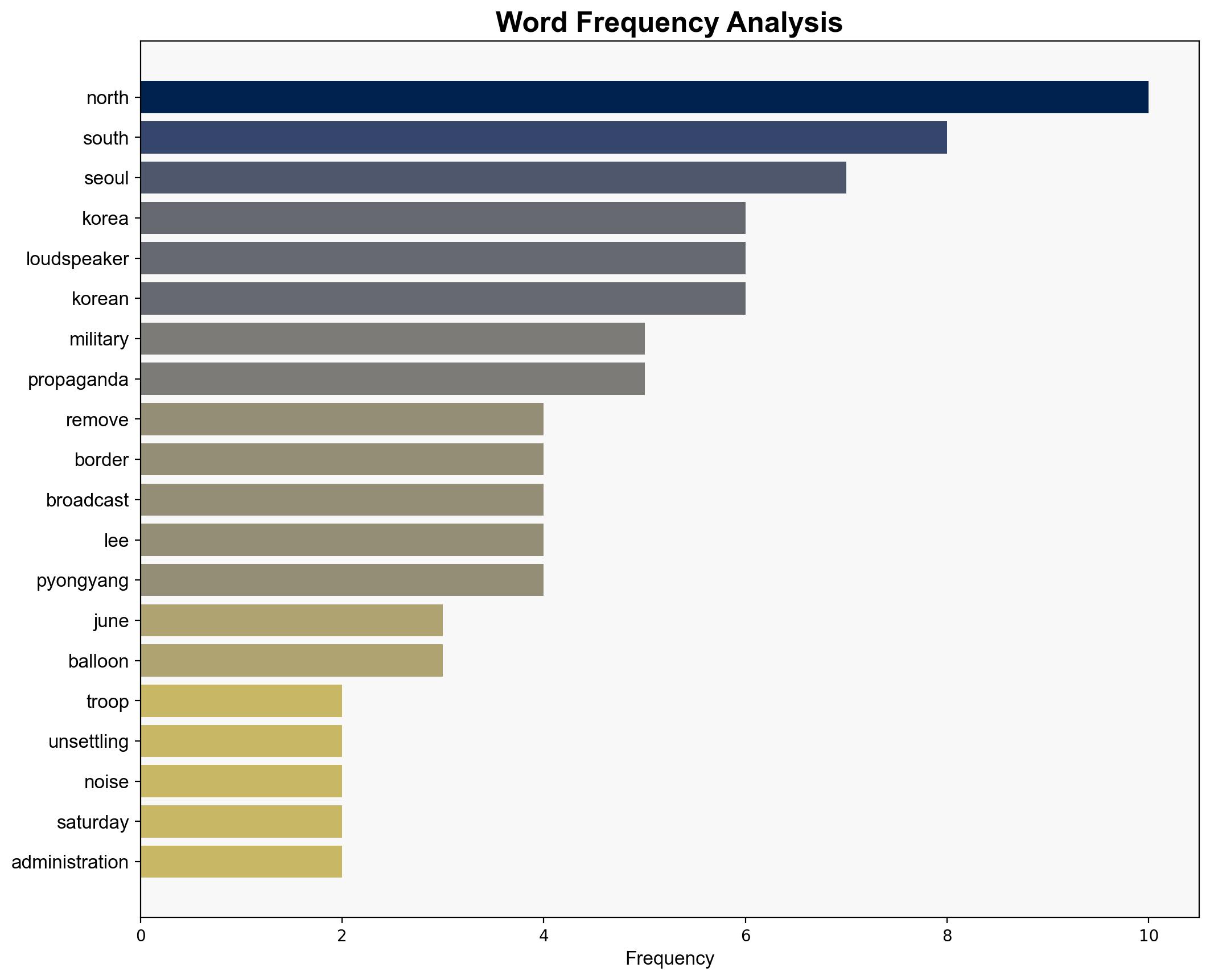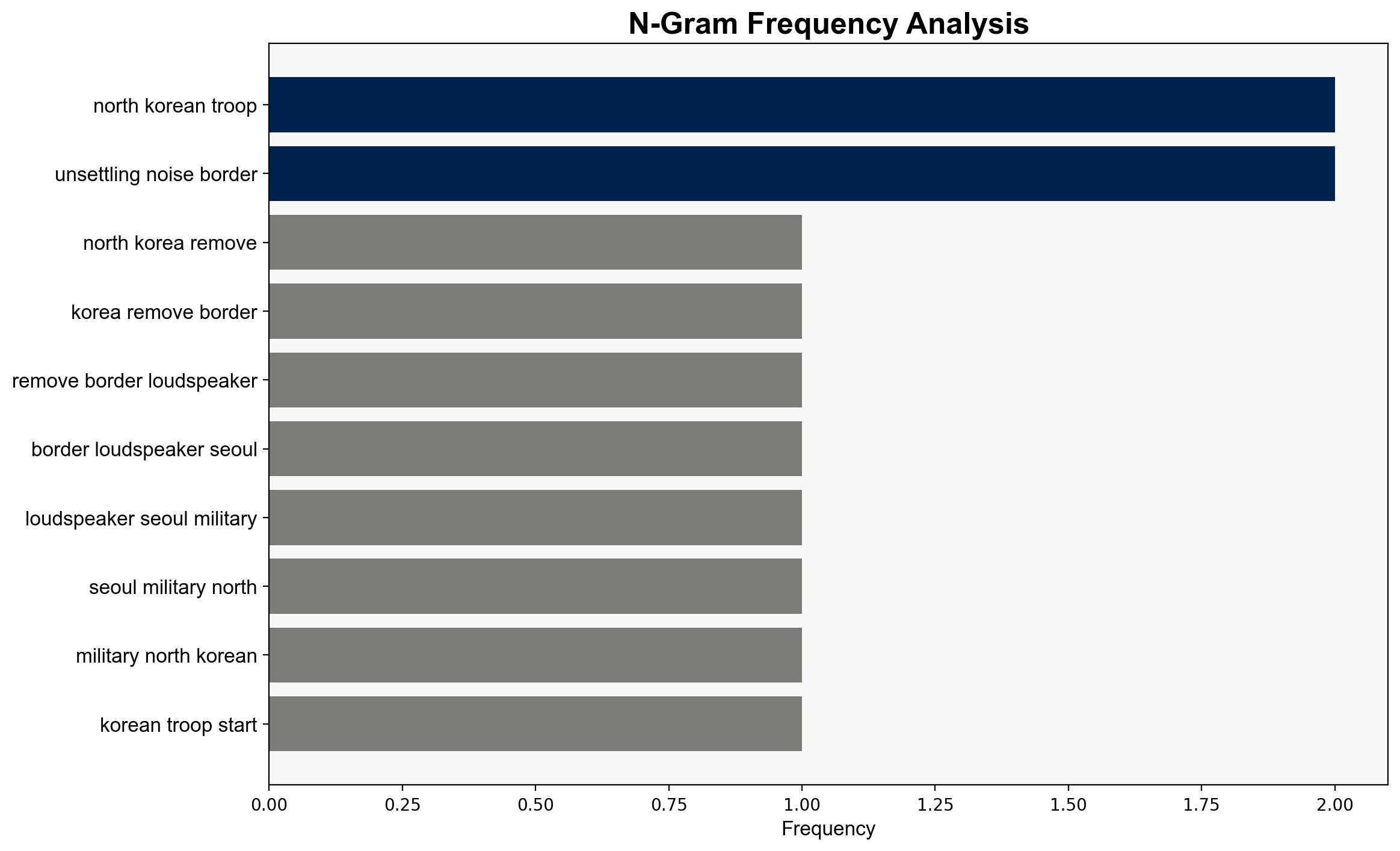North Korea Removing Border Loudspeakers Seoul Military – International Business Times
Published on: 2025-08-09
Intelligence Report: North Korea Removing Border Loudspeakers Seoul Military – International Business Times
1. BLUF (Bottom Line Up Front)
North Korea’s removal of border loudspeakers is likely a strategic gesture aimed at reducing tensions with South Korea, aligning with the new administration’s conciliatory approach. However, this action could also be a tactical maneuver to gain leverage in future negotiations. The hypothesis of a strategic gesture is better supported. Confidence level: Moderate. Recommended action: Monitor North Korea’s subsequent actions and prepare for diplomatic engagement while maintaining readiness for potential provocations.
2. Competing Hypotheses
1. **Strategic Gesture Hypothesis**: North Korea is removing the loudspeakers as a goodwill gesture to de-escalate tensions and open dialogue with South Korea’s new administration.
2. **Tactical Maneuver Hypothesis**: The removal is a tactical move to gain leverage in future negotiations, possibly to extract concessions from South Korea or the international community.
Using ACH 2.0, the strategic gesture hypothesis is more consistent with the timing of South Korea’s new administration and its expressed desire to ease tensions. The tactical maneuver hypothesis is less supported due to a lack of immediate demands or conditions from North Korea.
3. Key Assumptions and Red Flags
– **Assumptions**: It is assumed that North Korea’s actions are directly influenced by South Korea’s political changes. Another assumption is that the removal of loudspeakers is a genuine attempt to reduce tensions.
– **Red Flags**: The absence of explicit demands from North Korea raises questions about their true intentions. The historical pattern of North Korea using conciliatory actions as a prelude to more aggressive behavior is a potential red flag.
4. Implications and Strategic Risks
The removal of loudspeakers could lead to improved inter-Korean relations if followed by further conciliatory actions. However, if this is a tactical maneuver, it could result in increased tensions if North Korea’s demands are not met. The geopolitical risk includes potential misinterpretation by other regional actors, such as China or the United States, affecting broader regional stability.
5. Recommendations and Outlook
- Engage in diplomatic talks with North Korea to clarify intentions and explore opportunities for de-escalation.
- Maintain military readiness to respond to any potential provocations.
- Scenario Projections:
- Best Case: North Korea continues conciliatory actions, leading to renewed dialogue and reduced military tensions.
- Worst Case: North Korea uses the removal as a pretext for aggressive demands, leading to increased tensions.
- Most Likely: Initial reduction in tensions with potential for future diplomatic engagement.
6. Key Individuals and Entities
– Lee Jae-myung: South Korean President seeking to ease tensions.
– Yoon Suk-yeol: Previous South Korean President with a hardline stance.
7. Thematic Tags
national security threats, regional focus, geopolitical strategy, diplomatic engagement




